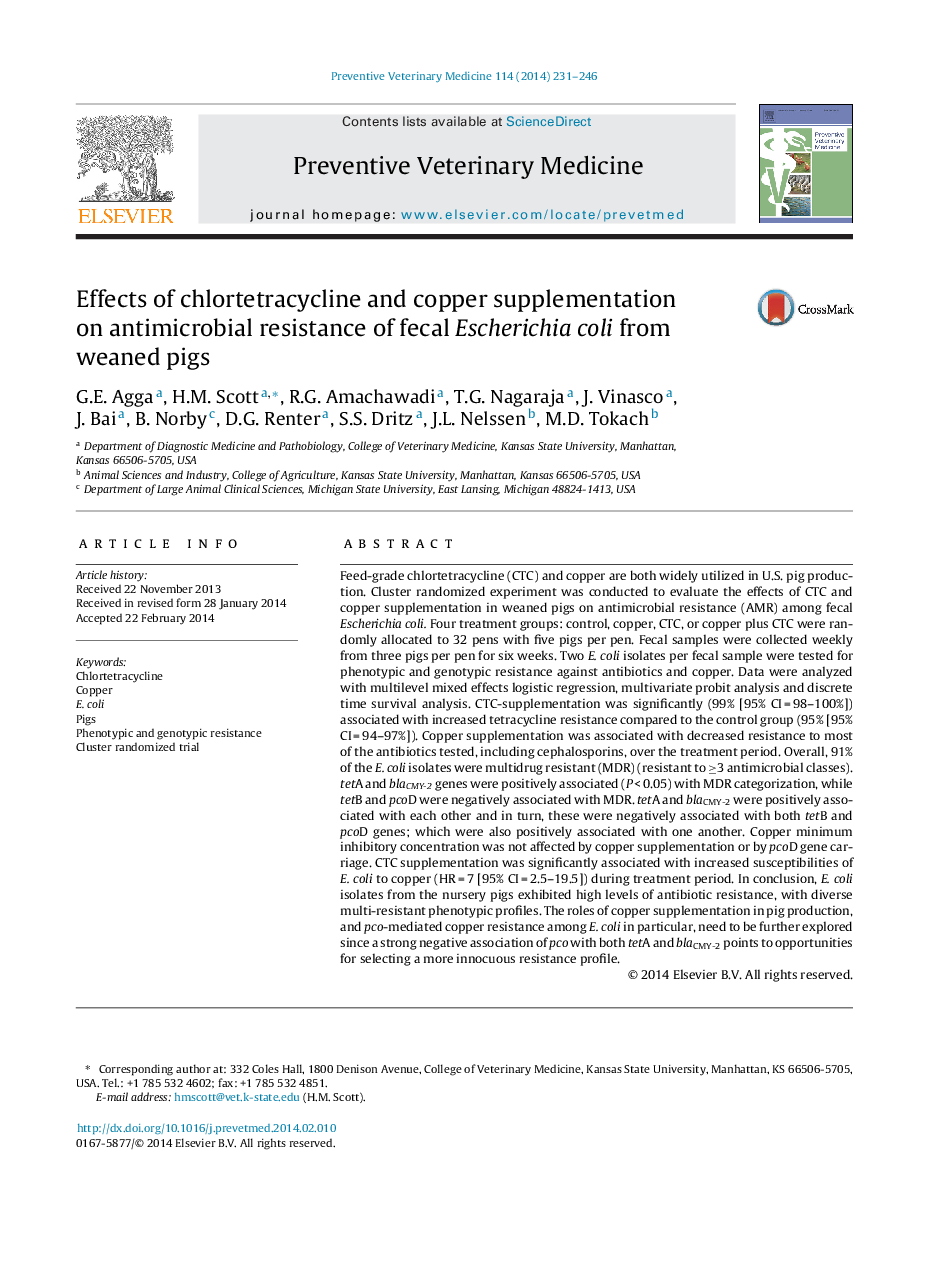| کد مقاله | کد نشریه | سال انتشار | مقاله انگلیسی | نسخه تمام متن |
|---|---|---|---|---|
| 2452445 | 1554177 | 2014 | 16 صفحه PDF | دانلود رایگان |
Feed-grade chlortetracycline (CTC) and copper are both widely utilized in U.S. pig production. Cluster randomized experiment was conducted to evaluate the effects of CTC and copper supplementation in weaned pigs on antimicrobial resistance (AMR) among fecal Escherichia coli. Four treatment groups: control, copper, CTC, or copper plus CTC were randomly allocated to 32 pens with five pigs per pen. Fecal samples were collected weekly from three pigs per pen for six weeks. Two E. coli isolates per fecal sample were tested for phenotypic and genotypic resistance against antibiotics and copper. Data were analyzed with multilevel mixed effects logistic regression, multivariate probit analysis and discrete time survival analysis. CTC-supplementation was significantly (99% [95% CI = 98–100%]) associated with increased tetracycline resistance compared to the control group (95% [95% CI = 94–97%]). Copper supplementation was associated with decreased resistance to most of the antibiotics tested, including cephalosporins, over the treatment period. Overall, 91% of the E. coli isolates were multidrug resistant (MDR) (resistant to ≥3 antimicrobial classes). tetA and blaCMY-2 genes were positively associated (P < 0.05) with MDR categorization, while tetB and pcoD were negatively associated with MDR. tetA and blaCMY-2 were positively associated with each other and in turn, these were negatively associated with both tetB and pcoD genes; which were also positively associated with one another. Copper minimum inhibitory concentration was not affected by copper supplementation or by pcoD gene carriage. CTC supplementation was significantly associated with increased susceptibilities of E. coli to copper (HR = 7 [95% CI = 2.5–19.5]) during treatment period. In conclusion, E. coli isolates from the nursery pigs exhibited high levels of antibiotic resistance, with diverse multi-resistant phenotypic profiles. The roles of copper supplementation in pig production, and pco-mediated copper resistance among E. coli in particular, need to be further explored since a strong negative association of pco with both tetA and blaCMY-2 points to opportunities for selecting a more innocuous resistance profile.
Journal: Preventive Veterinary Medicine - Volume 114, Issues 3–4, 1 June 2014, Pages 231–246
